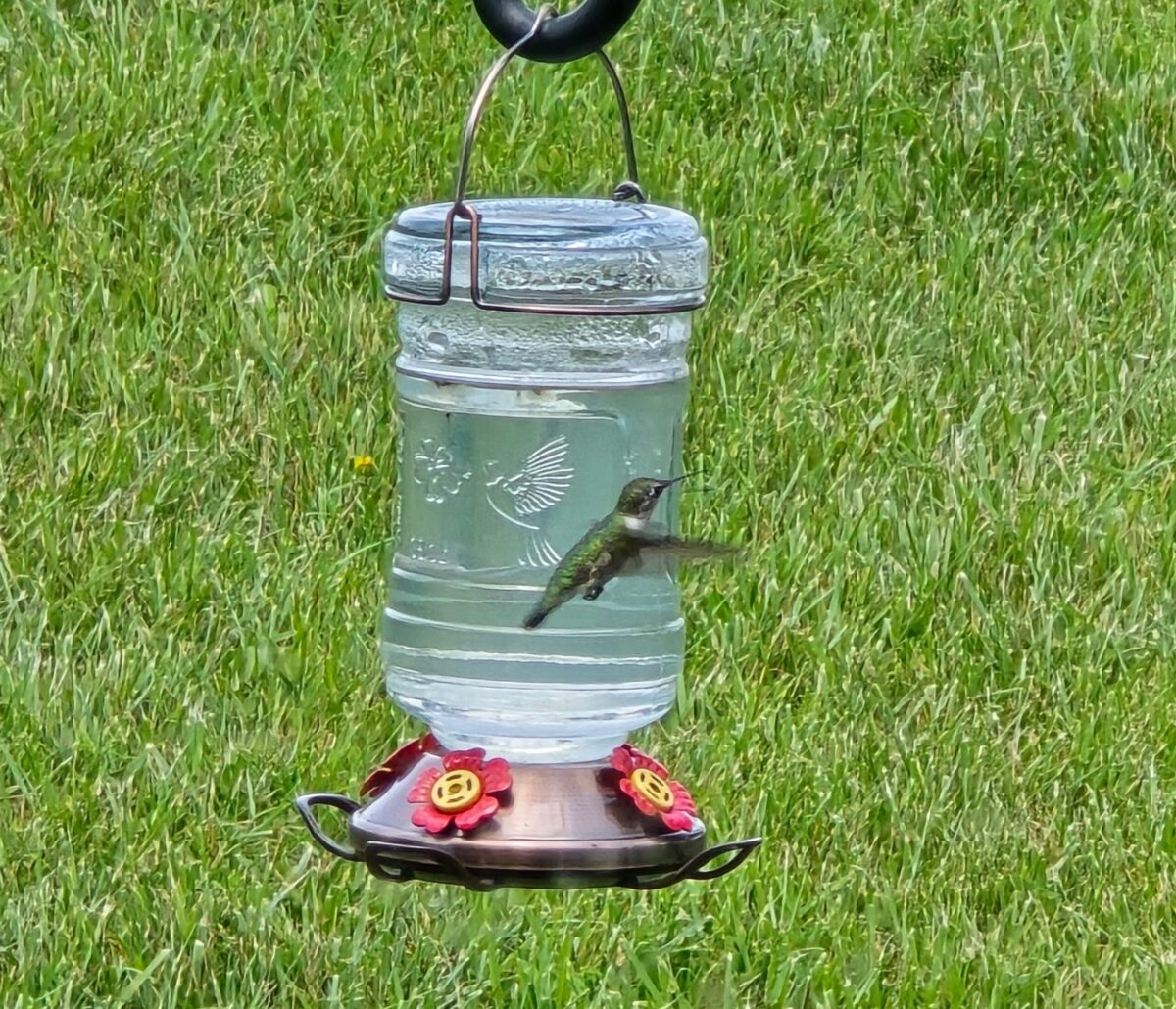The Magic of Hummingbirds: Nature’s Pollinators in Your Backyard

I have always enjoyed watching hummingbirds. For many years, our simple hummingbird feeder, which Larry Hurley gave me, (check out his hummingbird story) was hung up by our fence near our Limelight hydrangea. Last year, they made their nests in that bush. Back and forth, we would watch this one pair go from the feeder to our bronze Mimosa Tree.
Those Darn Mockingbirds
This year, however, after we cleaned out the feeder in mid-April to welcome our hummingbirds back, we watched as a pair of mockingbirds decided to make their home in our hydrangea. They would perch on top of the hook where our feeder would hang. My husband and I knew the hummingbirds were back in the area as we could see them around our garden. Did you know that these tiny birds migrate incredible distances, traveling from Central America to Maryland each spring?
After a week of this, we decided the feeder needed to be moved. After much debate, we moved it before our living room picture window. We were concerned that our cat would keep them from coming closer to the house. This week, though, they found the feeder. First one, then another, were flying about. And they are not even concerned about the cat or us. They even come for a sip while we sit on the porch a few steps away.
Natures Pollinators
Hummingbirds, with their high metabolism and frequent need to feed, are truly fascinating creatures. While they primarily drink nectar from flowers, they also eat small insects and spiders for protein, which is a win-win for gardeners. As they help control pests in the garden, they also transfer pollen from flower to flower, aiding in pollination. (If you watched Wild Kratts I wrote about a few weeks ago, they show a hummingbird in action.)
If there are flowers in the garden, why hang a feeder out? For me, the answer is simple: I love watching them. The older I get, the more I enjoy just sitting and watching all the birds in our yard. I now know why my grandfather put a more extensive bird garden out of their dining room window and my mom had so many bird books lying next to her chair. There’s a certain joy in observing these creatures in their natural habitat.
There is something wonderful and calm about watching all the birds that make our yard their home, but the hummingbirds are special. I like knowing our simple feeder helps provide a source of nectar, ensuring these tiny birds get the energy they need.
Care of your feeders
When using a hummingbird feeder, it’s important to avoid certain things to keep the birds safe and healthy:
Red Dye: Avoid using nectar with red dye. It’s unnecessary and potentially harmful. Plain sugar water is best.
Honey: Never use honey as it can ferment and cause fungal infections in hummingbirds and can kill them.
Artificial Sweeteners: These provide no nutritional value and can harm hummingbirds.
Dirty Feeders: Clean the feeder regularly to prevent mold and bacteria growth, which can make hummingbirds sick.
When we started hanging this feeder out, I found a simple recipe of 1 part sugar (natural sugar) and four parts water. We make it a point to clean the feeder out at least once a week, if not more, which not only keeps them happy and healthy but also ensures we are doing our part in caring for these beautiful creatures!

Thanks for the hint on making the hummingbird nectar with just sugar and water rather than buying the commercial red stuff. Works perfectly.